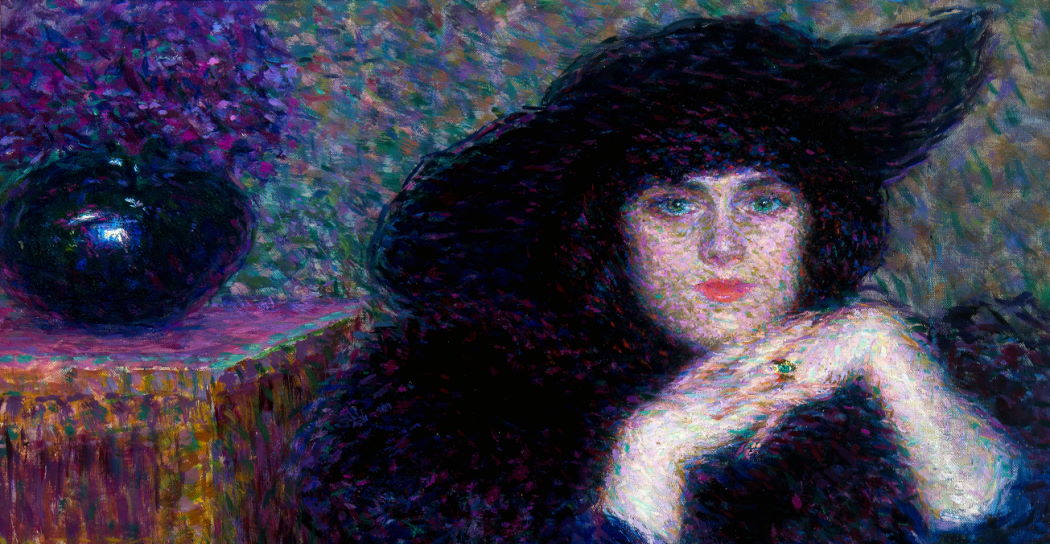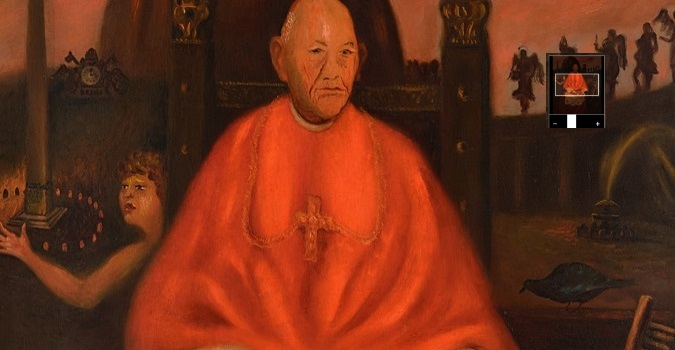Artwork of the month - December 2021
December 2021
Enrico Lionne (Napoli, 1865 - 1921)
Violette, 1913
Oil on canvas, cm 115,5x78,5
inv. AM 30

The fleeting and enigmatic face of Enrico Lionne's Violette, portrayed in her very attractive violet dress, exemplifies the author's investigation into the representation of the femme fatale.
The woman, framed in the chromatic glitter of an interior furnished with elements of strong decorative value (note the upholstery of the armchair with green and yellow flowers), is captured in a moment of tranquillity, underlined by the elongated and fluid pose of her body, even though her hands clasped under her chin and her absorbed gaze betray a desire to participate and listen thoughtfully to the context.
The expressive power of the work is accentuated by the use of the Divisionist technique which, using a rapid, animated brushstroke, enhances the fascination of the figure through a vibrant, atmospheric decomposition of colour, played out in the chromatic range of violet. The hues, according to the rhetorical mechanism of synesthesia, suggestively refer from the concrete to the abstract: the violet, the violets, the upholstery of the armchair, the name Violette.
Enrico Lionne painted the picture in 1913, on the occasion of the First International Art Exhibition of the Secession, where the work was set up in a room decorated in silver and violet, so much so that one critic of the time attributed a sort of "violet disease" to the artist.
Lionne's effortless adoption of Divisionist vocabulary and lively Expressionist colouring makes him one of the most fascinating interpreters of the cultural climate of the Roman Secession, in which many influences from beyond the Alps converge. It is no coincidence that the painting is currently included in the exhibition Klimt. La Secessione e l’Italia (Museo di Roma, 27 October 2021 - 27 March 2022).
Return to the section > The Galleria d'Arte Moderna artwork of the month







































